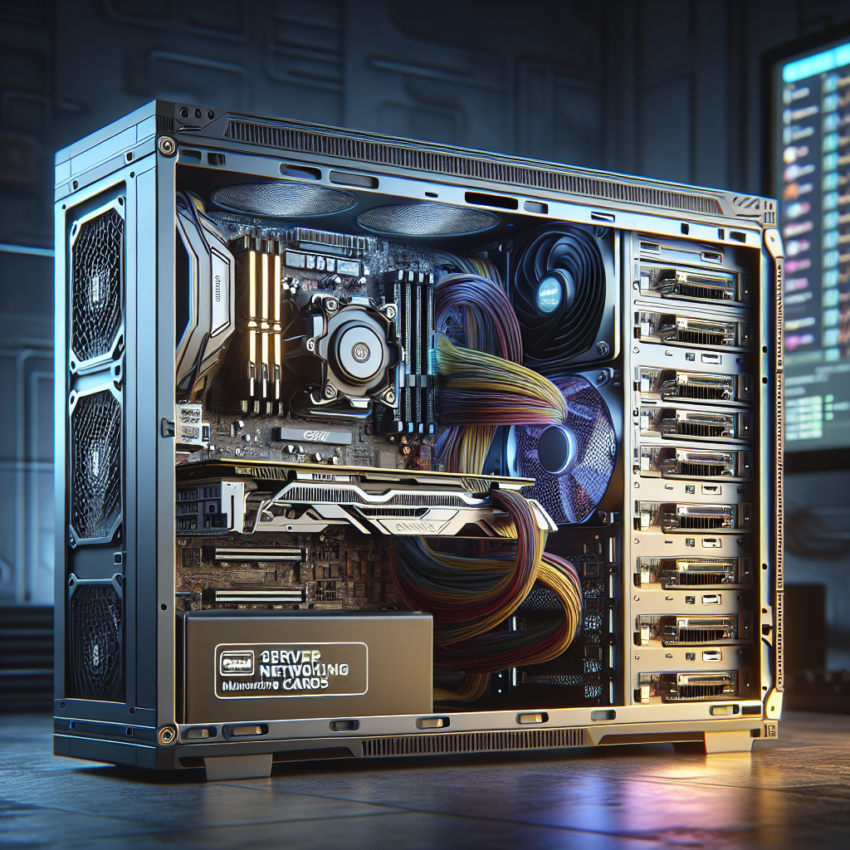Server-grade networking cards are typically found in data centers and high-performance computing environments. However, they are becoming increasingly popular in high-end gaming PCs. This trend raises an important question: why are some gaming PCs built with server-grade networking cards? This article delves into the reasons behind this choice and its potential benefits for serious gamers.
Understanding Server-Grade Networking Cards
Server-grade networking cards are designed to handle large volumes of data with high efficiency and low latency. These cards are optimized for reliable performance even under the most demanding conditions.
| Feature | Server-Grade Networking Cards | Standard Networking Cards |
|---|---|---|
| Data Handling | High volume, low latency | Moderate volume, moderate latency |
| Reliability | Highly reliable | Moderately reliable |
| Performance | Optimized for peak performance | Standard performance |
| Cost | High | Moderate |
Improved Bandwidth and Data Rates
One of the primary benefits of using server-grade networking cards in gaming PCs is the substantial increase in bandwidth and data transfer rates. High-bandwidth connections are crucial for reducing lag and ensuring a seamless gaming experience, especially in multiplayer online games where even a fraction of a second’s delay can impact performance.
Low Latency
Latency is the time taken for data to travel between the gaming PC and the game server. A lower latency means quicker response times, which is especially advantageous in fast-paced games. Server-grade networking cards are designed to minimize latency, providing gamers with a competitive edge.
Reliability and Stability
Another key advantage is the reliability and stability offered by server-grade networking cards. These cards are built to handle continuous, intense workloads without failure, ensuring that gaming sessions are not interrupted due to network issues. This reliability is critical for both casual gamers and professional esports players.
Enhanced Network Features
Server-grade cards often come equipped with advanced features like enhanced network traffic management and error correction. These features ensure optimal network performance by prioritizing gaming traffic and minimizing packet loss, leading to a smoother and more enjoyable gaming experience.
Future-Proofing
Investing in server-grade networking cards can also be seen as a future-proofing measure. As games continue to evolve and require higher bandwidth and more reliable connections, having server-grade hardware ensures your gaming PC will remain capable of handling these demands for a longer period.
Cost Considerations
While the benefits are clear, it is essential to consider the cost. Server-grade networking cards are significantly more expensive than standard options. However, for serious gamers who demand the best performance and reliability, this investment can be well worth it in the long run.
Case Studies
Esports Tournaments
In the competitive world of esports, milliseconds can make the difference between victory and defeat. Using server-grade networking cards, tournament organizers ensure that participants experience minimal latency and maximum reliability, leading to a fair and competitive environment.
High-End Gaming Setups
Many high-end gaming setups now incorporate server-grade networking cards to provide an optimal gaming experience. These systems are often used by professional gamers and streamers who cannot afford any network-related performance issues during their gameplay or broadcast.
Conclusion
In conclusion, while server-grade networking cards are an additional investment, the benefits they provide in terms of bandwidth, low latency, reliability, and performance make them a valuable addition to high-end gaming PCs. As technology and gaming demands continue to grow, the use of these advanced networking solutions is likely to become more prevalent among serious gamers.

